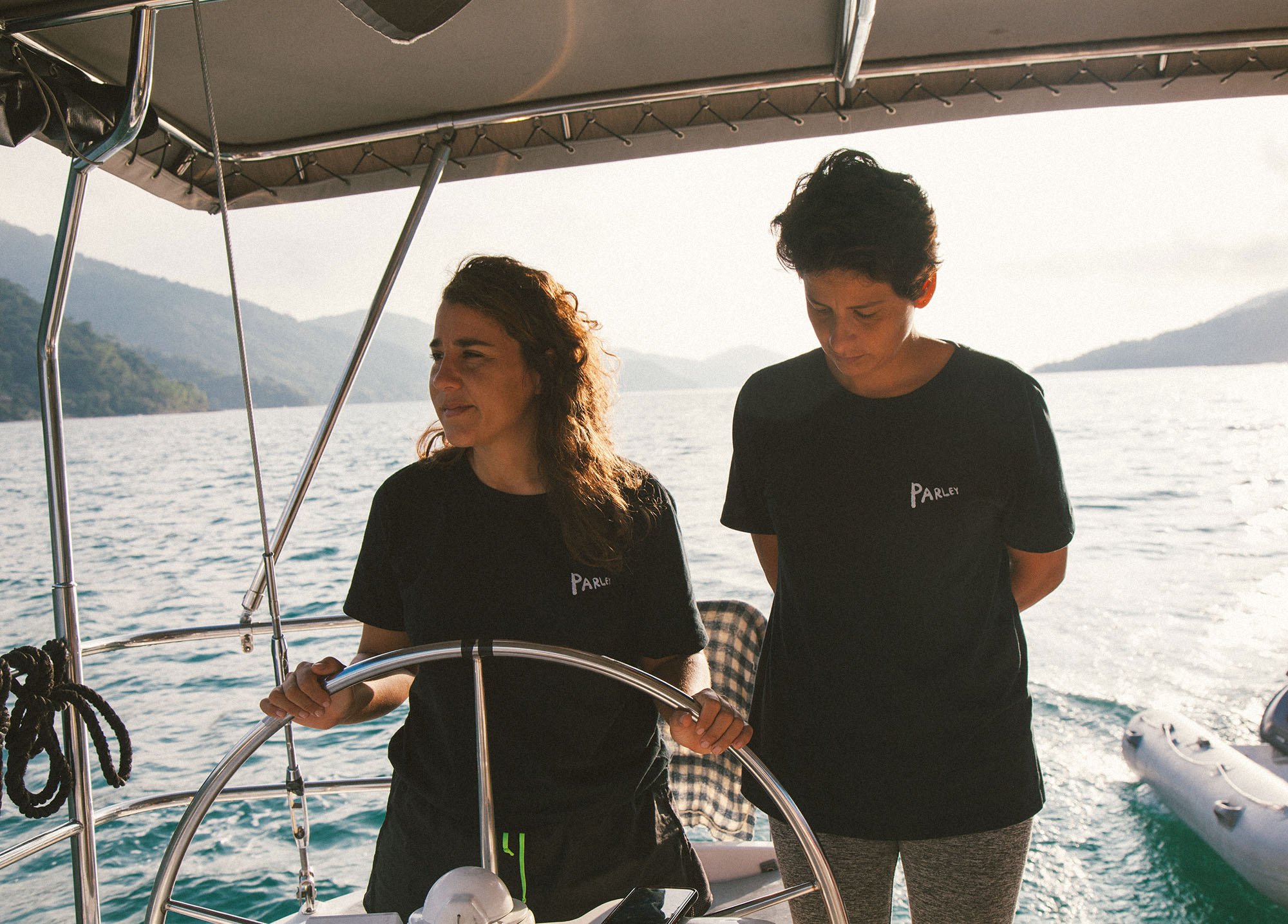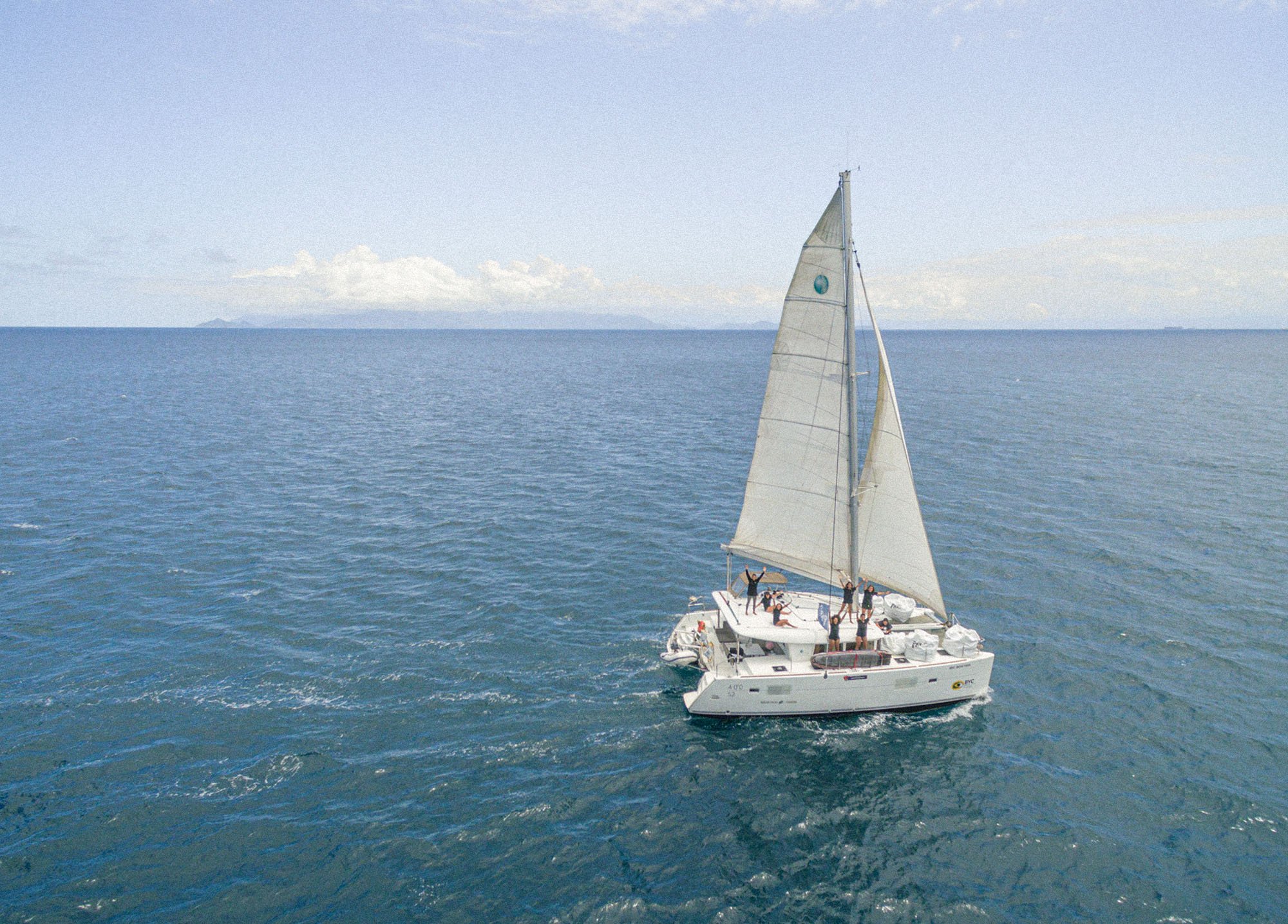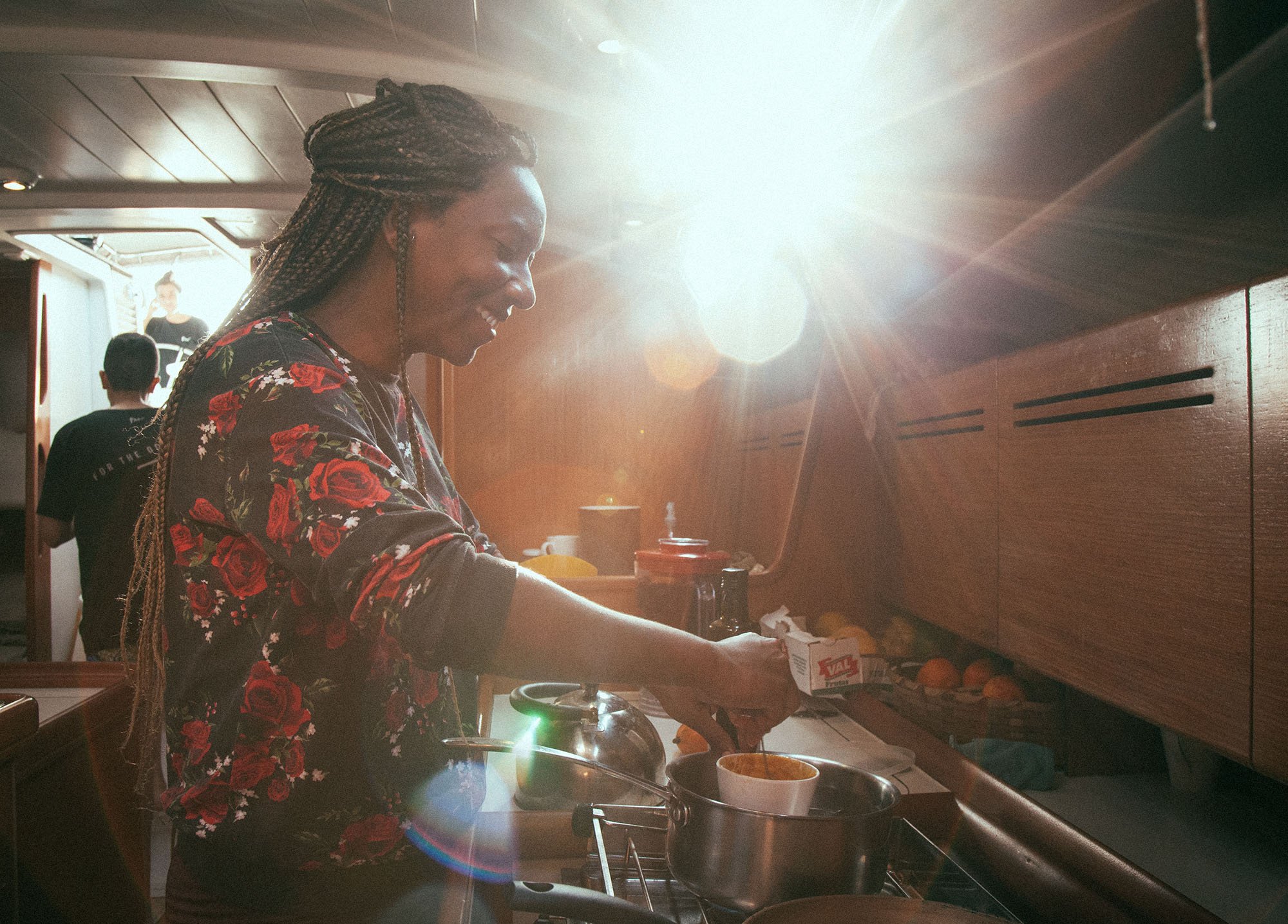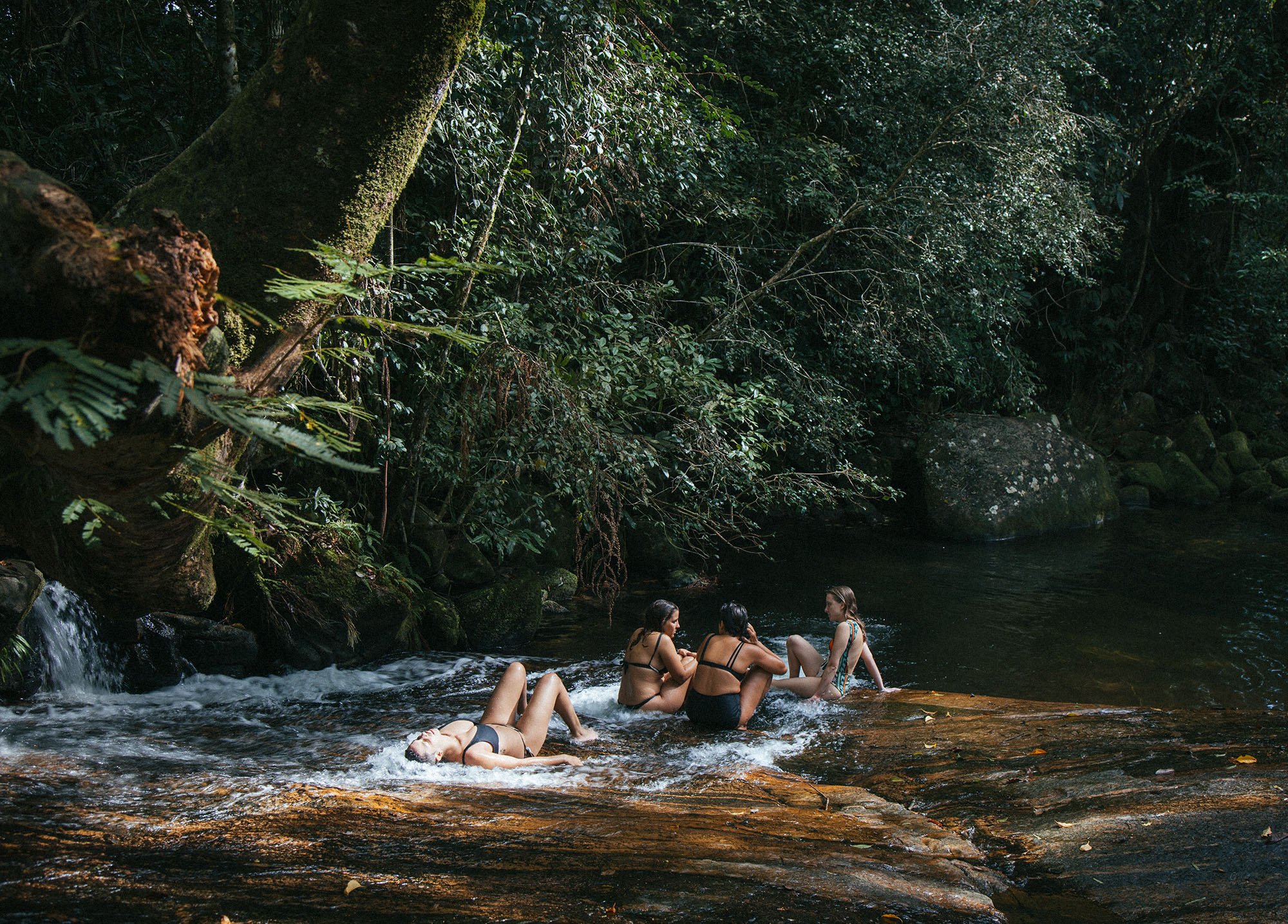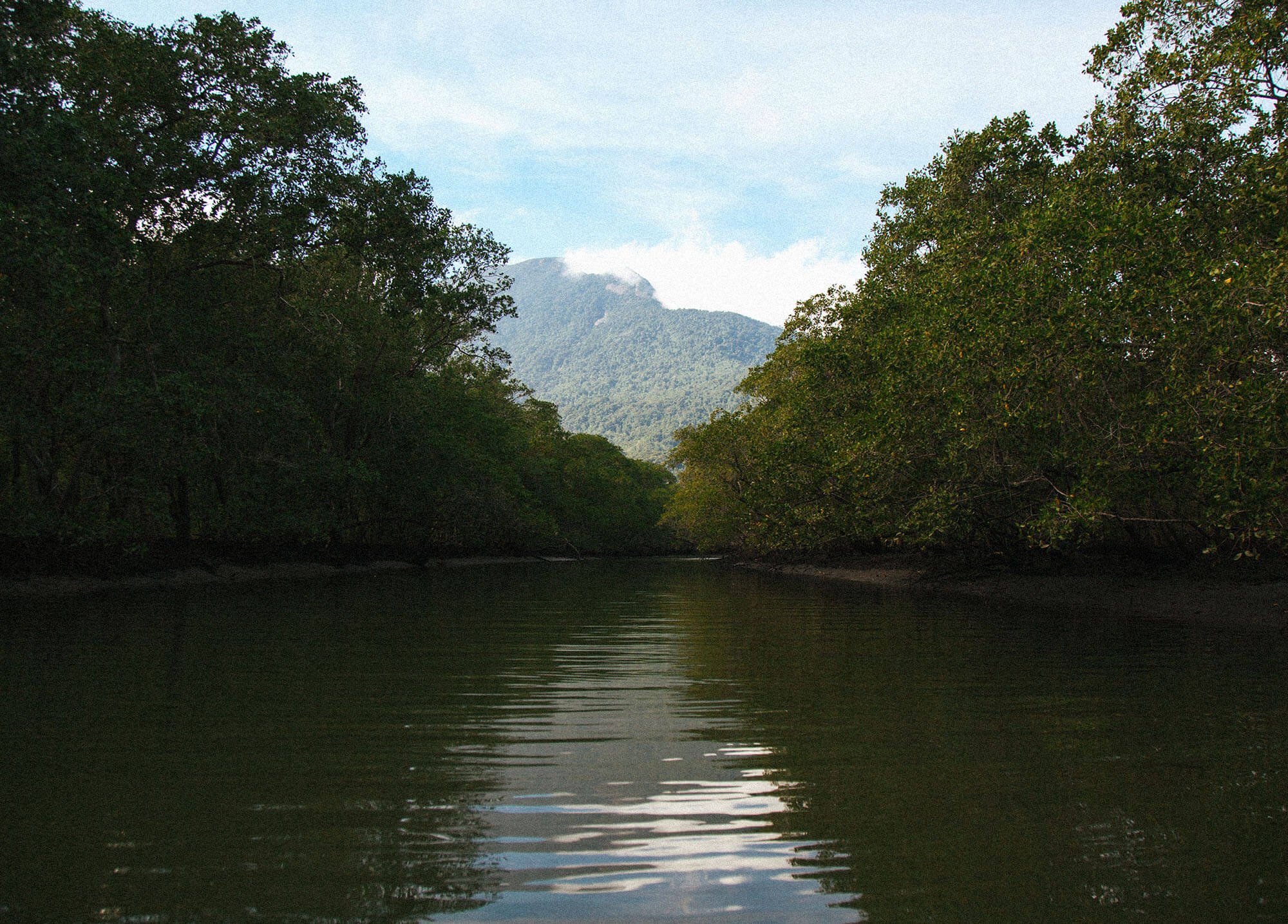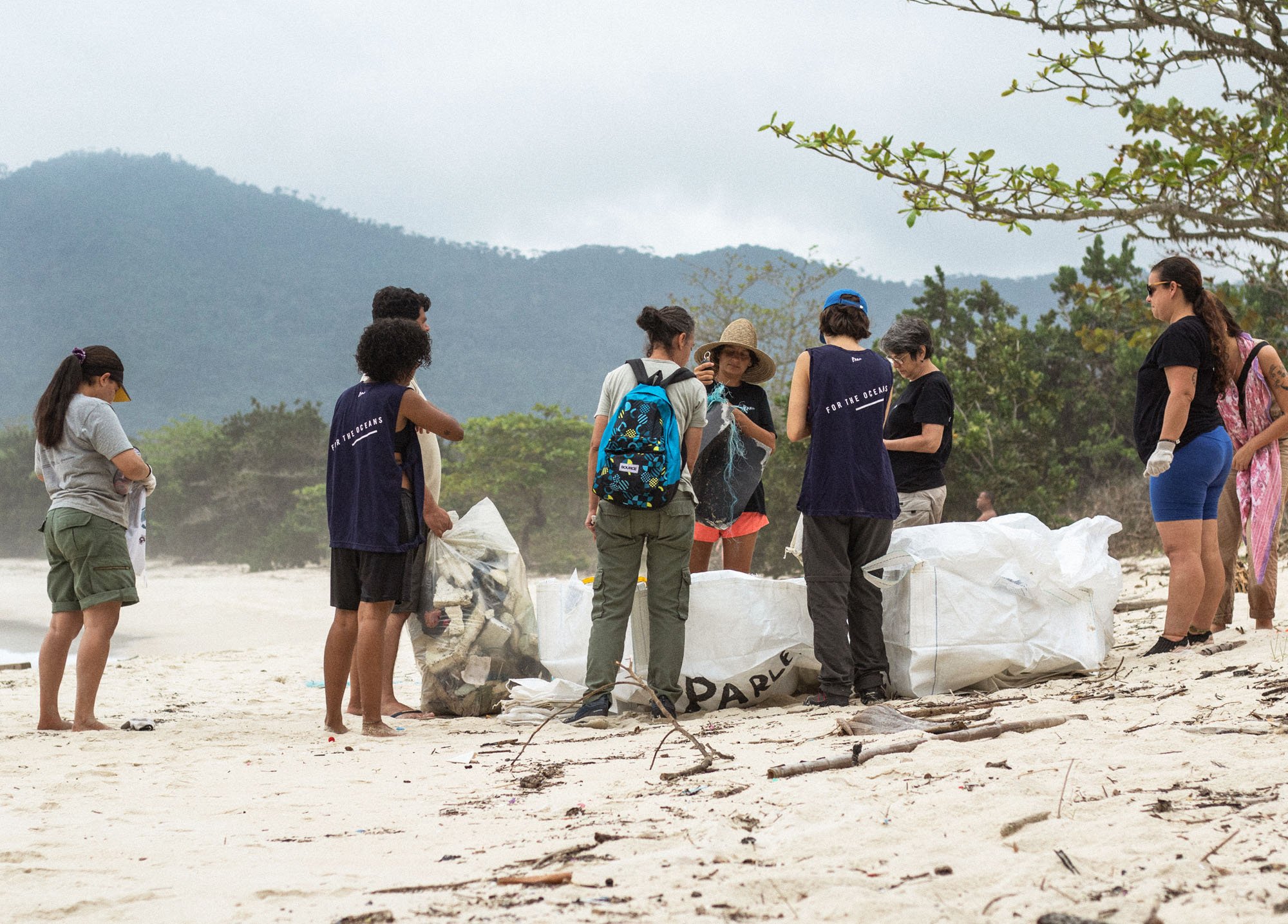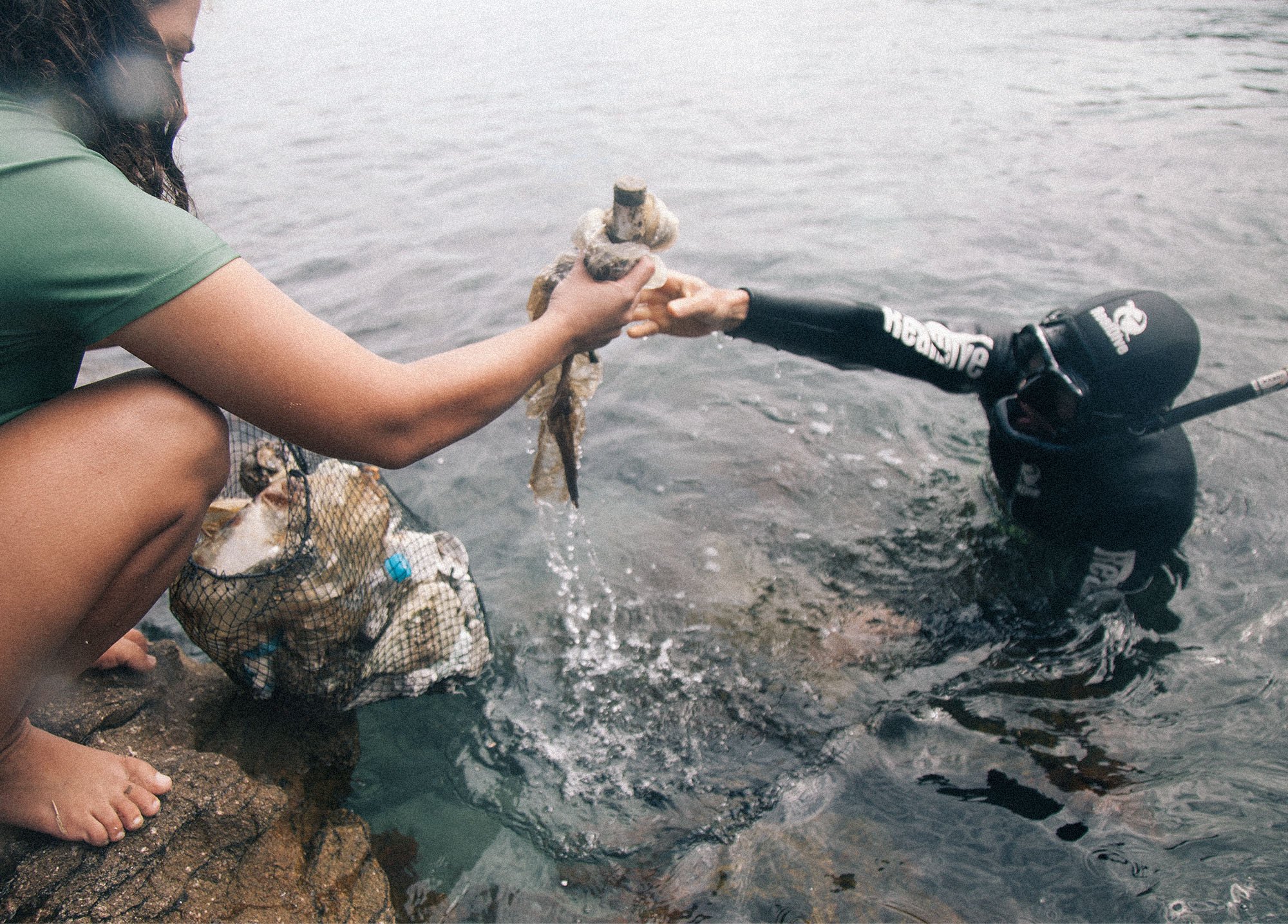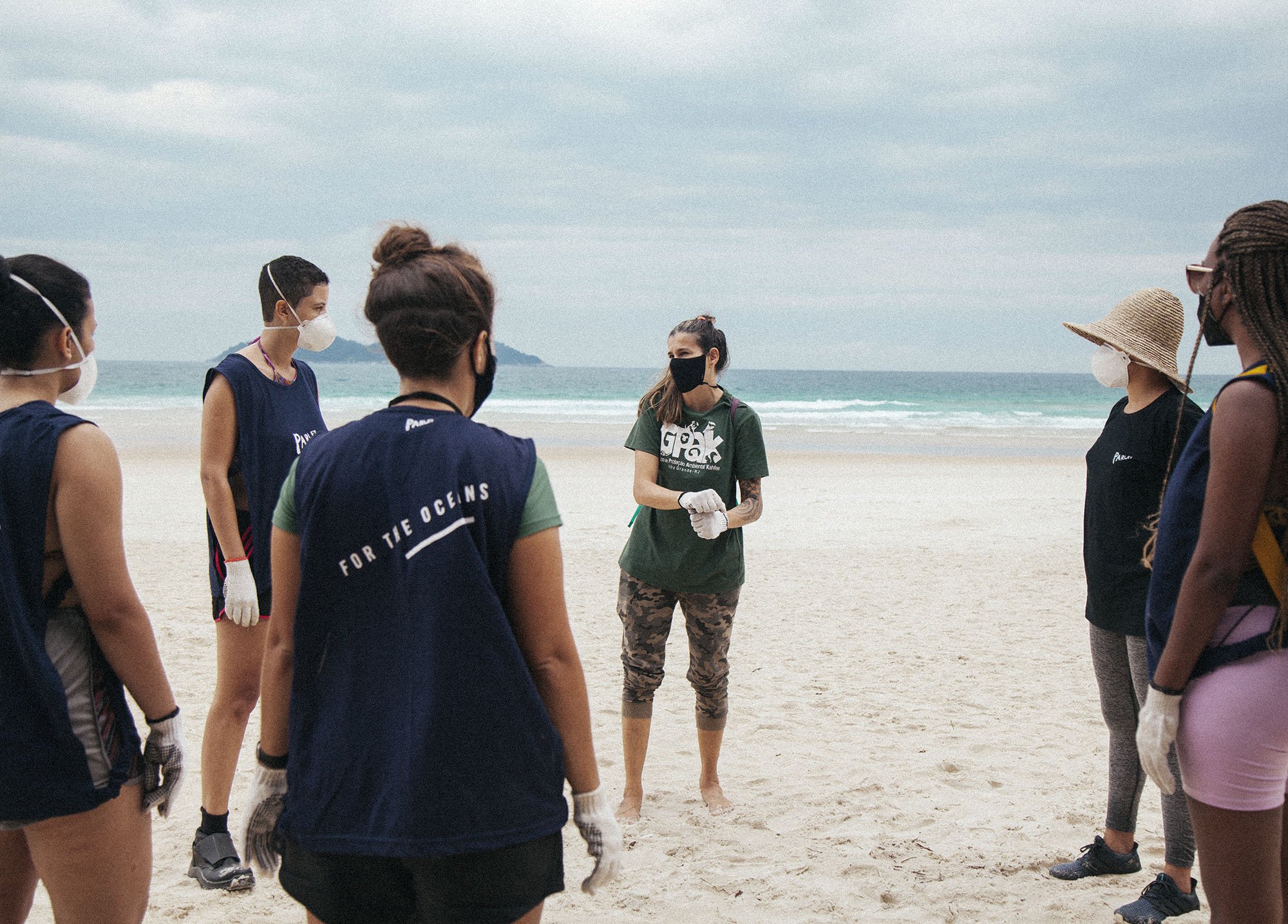SAILING FOR THE OCEANS
WE JOIN THE TEAM FROM PARLEY BRAZIL ON A SAILING ODYSSEY AROUND ILHA GRANDE TO LEARN MORE ABOUT WHAT MAKES THE COSTA VERDE ECOSYSTEM SO UNIQUE – AND THE THREAT POSED BY PLASTIC
Just a few hours from Brazil’s two largest cities, and a world away from São Paolo’s skyscrapers and Rio de Janeiro beach crowds, lies the Costa Verde, a mesmerizing lost world of volcanic peaks and yawning bays carpeted in a thick layer of the pristine Atlantic rainforest which give the area its name. With more islands than there are days in the year, each bordered by crystal-clear waters that shimmer green with the reflections of their forests, and harbor a unique convergence of tropical and temperate marine life as penguins and orcas migrate from Antarctic waters to mingle amongst the turtles of the corals, the Costa Verde is one of the most biodiverse landscapes in the world.
Nowhere is this biodiversity more evident than in Ilha Grande, an island about the size of Brooklyn that hosts a range of ecosystems from mangroves to lagoons, rivers and waterfalls cascade down from the towering Pico da Pedro D’Agua, jungles home to howler monkeys and maned sloths, and some of Brazil’s most beautiful beaches, such as the stunning Aventureiro on the Atlantic-facing side of the island which Clean Waves pays a particular focus to.
It's hard to think of a better landscape in which to switch off from the chaos of our urban world and reconnect with the beauty of nature than the sublime Costa Verde, and so back in 2017, Parley Brazil launched Sailing for the Oceans. An annual expedition taking place on a twin-hulled catamaran, Sailing for the Oceans is an immersive journey on board a floating laboratory where a diverse crew of community leaders, environmental enthusiasts, educators, athletes and artists explore ideas, practices and solutions to address plastic pollution and climate change.
Here we speak to Juliana Poncioni, an environmental engineer who has been sailing the Costa Verde since she was 12, and her Parley Brazil teammate Thais Goncalves to learn more.
“Sailing for the Oceans is a very conscious experience: we eat vegan food, we go on long hikes, and we connect with the communities of Ilha Grande.”
WHAT HAPPENS ON BOARD SAILING FOR THE OCEANS?
Thais: Sailing for the Oceans is an annual expedition where different people can connect with the oceans by experiencing what it is like to live aboard a boat. The silence of sailing is golden — it’s a very conscious experience: we eat vegan food, we go on long hikes, and importantly, guests on board the ship get to connect with the communities of Ilha Grande. We hold beach clean-ups with the local kids; we made a film about it together with them, and the following year we got to present it to the community by putting together a cinema on the beach one evening.
THERE ARE LOADS OF BEAUTIFUL PHOTOS OF CANOEING ADVENTURES AND SURF LESSONS WITH THE KIDS. WHO ARE THEY, WHERE ARE THEY FROM?
Juliana: They're kids from the community of Aventureiro, and we’ve been doing these environmental activities with them, from beach cleanups to canoeing, surfing and sailing, to holding discussions and workshops, and the beach cinema. We also did bird watching with them — the kids were amazed. I know at first it can sound like there's nothing to do with our work, but they live on an island, so everything that has to do with them knowing about their island goes towards them loving and protecting their environment, which basically is protecting the ocean. They're super, super nice kids, passionate about the ocean, water sports, and going out in nature.
“What we have been trying to do with each expedition is to have more and more diversity so we can have more intersections of innovation.”
WHO HAS SAILED WITH YOU ON THESE EXPEDITIONS?
Juliana: It depends. The first time we had a lot of athletes on the boat: we had Martine Grael, a two times Olympic sailing champion. We had two surfers as well, a female and a male surfer, a yoga teacher, an outrigger-canoe athlete as well as a musician, and the media team. That was the first Sailing for the Oceans. The last Sailing for the Oceans was the first time that we had a volunteer crew through an open-call process, open to the general public. And we had two girls, a black woman from Sao Paulo, and a super young woman from an under-privileged area of Rio, who work in logistics for Greenpeace. We had an architect that works with recycling plastic to build housing infrastructure, we had someone that works with the traditional community on the other side of the island, creating products out of discarded fishing nets, and a university professor. And we also welcomed Parley’s newest, and youngest, oceans ambassador, the 16-year-old surfer Sunny Pires from Buzios, on board. So what we have been trying to do with each expedition is to have more and more diversity so we can have more intersections of innovation.
AS IT’S JUST A COUPLE OF FEW HOURS DRIVE FROM SAO PAULO AND RIO DE JANEIRO, HOW HAS ILHA GRANDE BEEN COPING WITH TOURISM?
Juliana: As it’s a UNESCO-protected area, there aren’t any big resorts here. Instead, there are quite a few pousadas dotted around the island, with a big cluster around the harbor. In terms of infrastructure, everything is transported by boat: people, trash, supplies — even to take children to school. Out on the east coast by Aventureiro beach, the community we work closely with, there’s a primary school, but when they get older they have to travel across to Angra Dos Reis on the mainland to go to school. In recent years, internet has come to the island, even to Aventureiro, which is a good development as it helps the pousadas be more organized and attract visitors who bring in income, but on the other hand, there’s more predatory tourism coming, requesting things that don’t make sense to the community, or the area.
“As Rio de Janeiro is only two-and-a-half hours away, and Sao Paulo four, there’s a lot of plastic that comes from those big cities, and via the currents lands on exactly the beaches that should be the most preserved.”
WHAT DO YOU MEAN BY PREDATORY TOURISM?
Juliana: Take Aventureiro beach for example. It was once an area that used to be quite hard to get to — that's why it’s called Aventureiro, because it was a real adventure to get there, hiking up and down the mountain through the rainforest. But now speedboats packed with people tour around the island in one day. And that’s very fast: one day isn’t enough to properly appreciate the island. So people go to Aventureiro, take selfies, drink beers, light a barbeque — which is not allowed — play loud music, and then leave their trash behind as they speed away at sunset. And that doesn't bring any benefit to the community or the environment. That kind of ‘selfie tourism’ actually brings a lot of harm.
WHAT ARE SOME OF THE OTHER THREATS TO THE COSTA VERDE ECOSYSTEM?
Thais: Plastic. As Rio de Janeiro is only two-and-a-half hours away, and Sao Paulo four, there's a lot of plastic that comes from those big cities, and via the currents lands on exactly the beaches that should be the most preserved, so that's a big threat. There is also illegal fishing.
Juliana: Also, between Ilha Grande and the mainland there’s a deep channel where a lot of big ships come in and out from the Angra Dos Reis harbor and onto Rio. Many are actually oil tankers, as this area is also home to a lot of oil fields, so there’s always the threat of an oil spill, and all the other kinds of pollution that comes with these big ships. There’s also another curious impact, that when these big ships are close to the islands, the internet connection stops working. It makes us wonder how it’s affecting life under the waterline.
Photography by Analice Diniz



